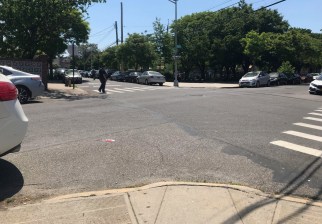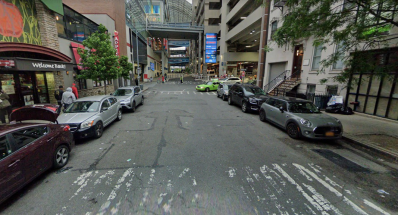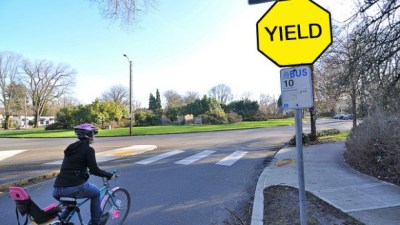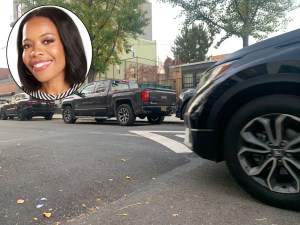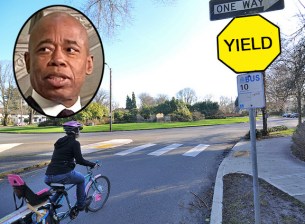#StuckAtDOT: Whatever Happened to Those Awesome Rule Changes for Cyclists?

The Department of Transportation has not moved forward with a series of ambitious rule changes that would have improved cycling and encouraged more people to get around on two wheels, Streetsblog has learned.
In January 2021, Streetsblog reported that the agency was planning several changes — including legalizing the so-called “Idaho Stop” — that were supposed to have taken effect by now.
But they haven’t.
An agency spokesperson said only that such delays are fairly common and that DOT is still working on the changes. But the spokesperson provided no additional information.
At issue are two significant rule changes that were both included in the agency’s regulatory agenda for fiscal year 2021, which ran from July 2020 through June 2021:
- Cyclists would be allowed to turn right on a red light, provided the cyclist yields if there is a pedestrian present. This rule change was supposed to be initiated sometime between April and June 2022, but never happened. In the time since this rule was proposed, even federal authorities have come out in favor of the so-called Idaho Stop.
- Cyclists would be allowed to go through a red light or stop sign at a “top of the T” intersection (i.e. where one road dead-ends into another road). This rule was also supposed to go into effect between April and June 2022, but did not.
The agency included both rule changes on its regulatory agenda for fiscal year 2022 — which runs from July 1, 2022 until June 30, 2023 — but did not change the implementation date.
Both rule changes are crucial, the agency said. Allowing the Idaho Stop, for example, will give cyclists “an opportunity to turn ahead of turning traffic allowing them to avoid the blind spot of turning vehicles and the ‘hook’ type of crash, one of the most common threats to cyclists at intersections.” And the “top of the T” rule change is also a no-brainer because it would legalize common practice at the very locations “where there is no history of crashes.”
“It allows cyclists to maintain momentum which saves energy and reduces trip time, making cycling more attractive,” the agency said.
Nonetheless, both rules are stalled and advocates are frustrated — partly because they don’t know what the holdup is.
“The good news is these changes are still on the table. The bad news is they’ve been on the table going on several years now and DOT hasn’t pulled the trigger,” said Jon Orcutt, advocacy director for Bike New York and a DOT official under Mayor Bloomberg. “It would be helpful if the city could provide clarity about the source of delay.”
Years ago, it seems, Orcutt was cheerleading the changes.
“These rule changes could add up to a profound long-term shift in promoting New York City bike transportation,” Orcutt said back in 2020. “They recognize that bikes and motor vehicles have radically different characteristics and could reduce quota-driven bike ticket stings that don’t improve anyone’s safety.”
Poor policing is also an equity issue, added Elizabeth Adams, the senior Director of Advocacy and Organizing at Transportation Alternatives.
“Creating space between bike riders and cars is key to ensuring bike riders feel and are safe — while also removing a rule that is disproportionally enforced against Black and brown bikers,” she said. “Legalizing the ‘Idaho stop’ does both of these things. DOT must advance these rule changes without delay.”
